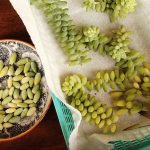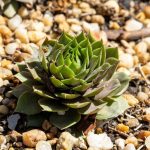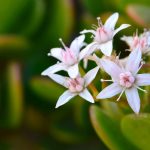Are you interested in succulent plants that can draw in bees and other pollinators? With a variety of options available based on your climate, gardening expert Melissa Strauss presents her top choices for succulents that will entice bees and other pollinators to your garden.
While creating a pollinator sanctuary, many gardeners tend to overlook succulents as favored plants for pollinators. Surprisingly, these plants produce nectar and pollen-rich flowers without needing extensive watering or maintenance.
Amidst the scorching summer heat when most flowering plants struggle to retain water, succulents bloom vibrantly. To establish a thriving pollinator garden, it’s crucial to have a diverse range of plants that flower at different times throughout the year, attracting pollinators back with a reliable food source.
Consider the color of your flowers when planning your garden, as different pollinators are drawn to various colors. Bees, for instance, are attracted to flowers reflecting ultraviolet light, favoring colors like blue, purple, yellow, and white. On the other hand, hummingbirds and butterflies are more inclined towards red blooms.
Let’s delve into some succulent suggestions that could be valuable additions to your pollinator garden.
Aloe
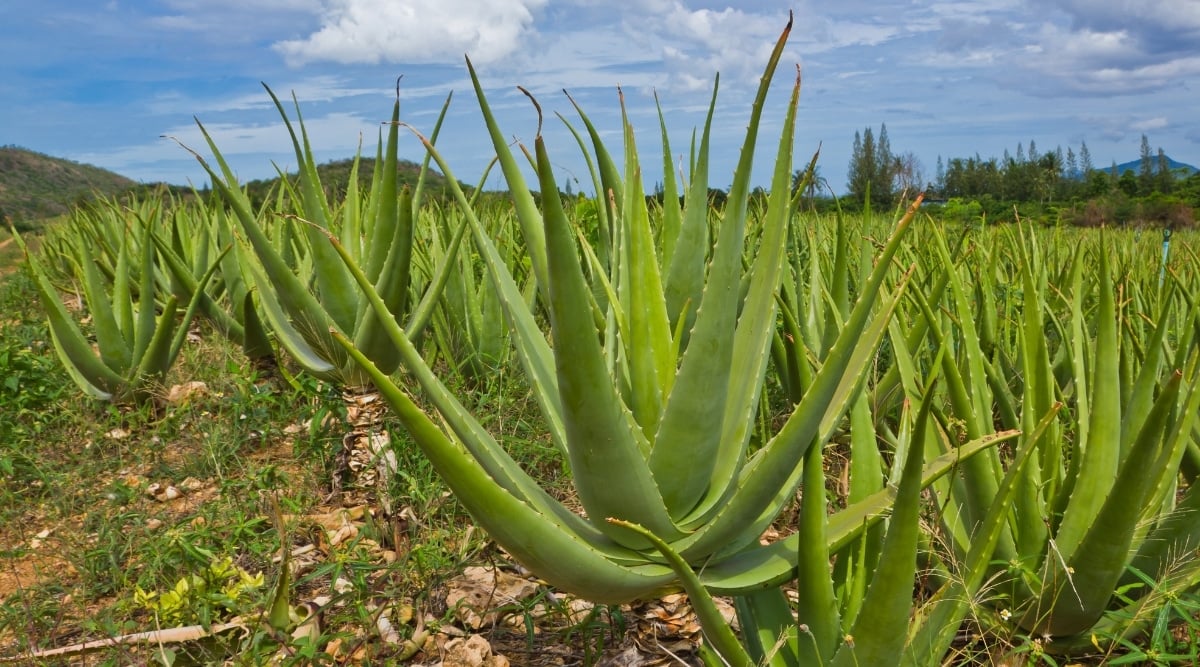

|
|
botanical name Aloe |
|---|
With Aloe encompassing several hundred species, the renowned Aloe vera, commonly found in skincare and burn care products, is just one of them. Interestingly, many people are unaware that their Aloe plant blossoms as it matures, typically after about four years.
During fall, Aloe plants produce large, sweet-smelling inflorescences, making them appealing to pollinators due to their high nectar content and autumnal blooming pattern. While some Aloes are predominantly pollinated by bees, others attract hummingbirds and butterflies.
Echeveria
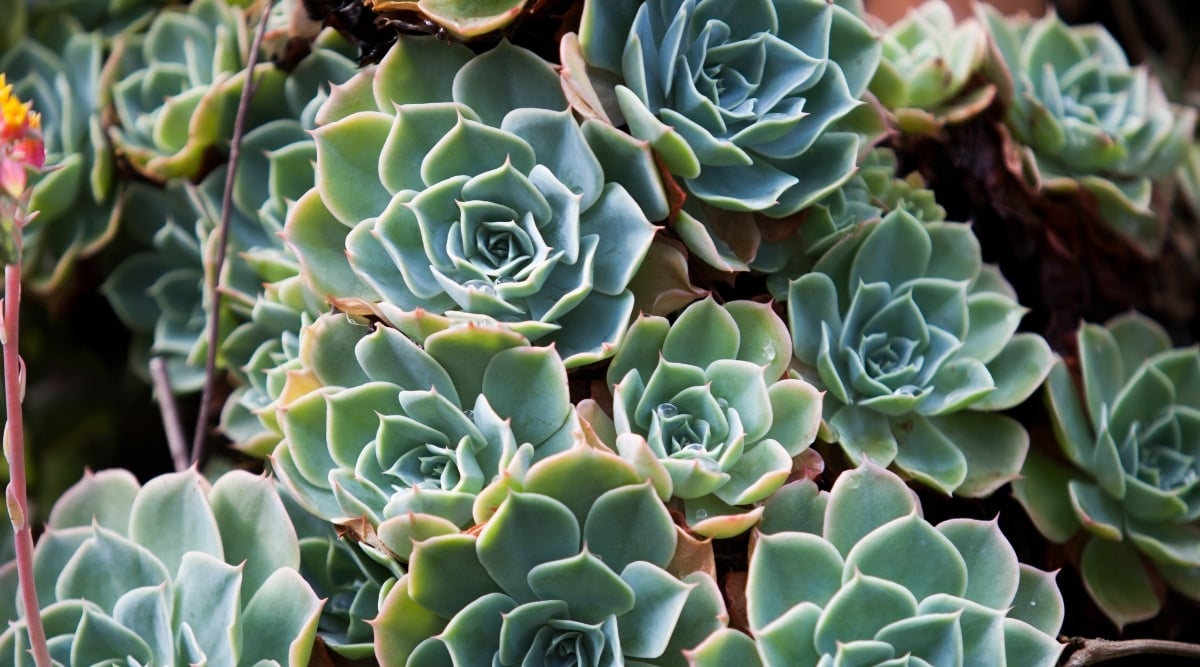

|
|
botanical name Echeveria |
|---|
Echeveria plants are incredibly user-friendly. These succulents exhibit plump leaves that form delightful rosettes available in various colors, shapes, and sizes. The sight of my blooming Echeverias consistently brings me immense joy.
During the summer, these plants showcase a tall, gently curving inflorescence. The striking coral-hued flowers blossom in a single row from the stem’s midpoint to its end in a sequential manner, exuding elegance in their simplicity. Moreover, the flowers of Echeveria are known to attract hummingbirds and butterflies to your garden.
Echinocactus
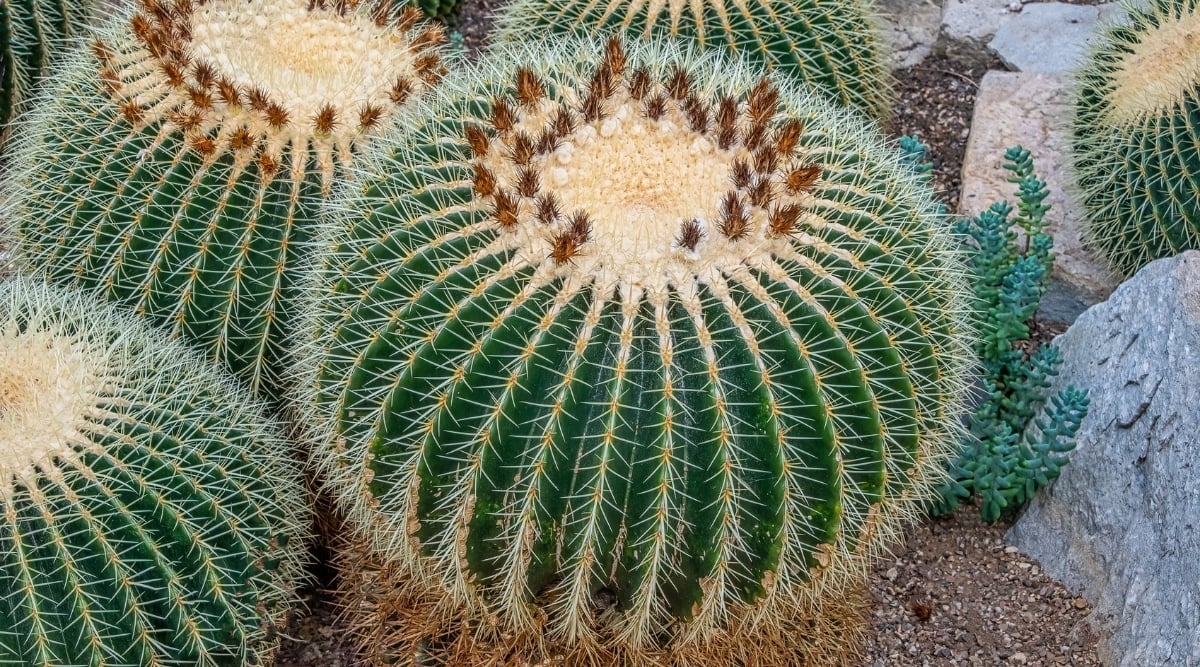

|
|
botanical name Echinocactus |
|---|
|
|
sun requirements Full Sun |
|---|---|
|
|
height Up to 3’ |
|
|
hardiness zones 9-12 |
The Echinocactus species, including renowned plants like the Golden Barrel cactus and Turk’s Head cactus, exhibit cactus traits while not strictly succulent. However, they share similar requirements and showcase beautiful flowers adding to their allure. With most species boasting a spherical shape adorned with golden-yellow spines.
Characterized by brightly colored, funnel-shaped blossoms, Echinocactus species like the Golden Barrel emanate vibrant yellow blooms that elegantly unfurl resembling a crown. These flowers are highly attractive to bees and butterflies, and the subsequent fruit they yield post-pollination is a delightful treat for local avian creatures.
Elephant Bush
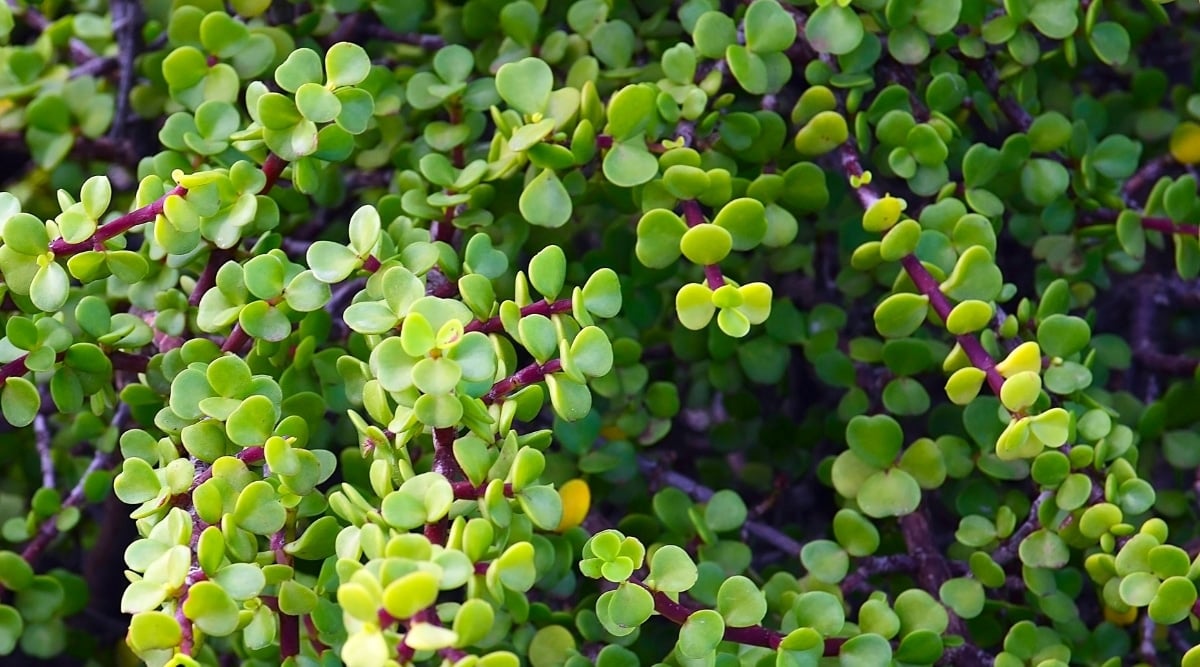

|
|
botanical name Portulacaria afra |
|---|---|
|
|
sun requirements Full Sun to Part Sun |
|
|
height 8’-15’ |
|
|
|
hardiness zones 10-11 |
Elephant bush, resembling a small-leafed jade plant, may reach a height of 20′ when planted in the ground. However, when grown in a container, its size remains more manageable.
This plant thrives in ideal conditions, flowering profusely. While not likely to flower as a houseplant, attracting pollinators is a different story altogether.
Abundant bright, indirect sunlight prompts the elephant bush to produce numerous tiny, bright pink flowers. In their natural environment, they can flower so much that the blooms overshadow the foliage, attracting bees with their pollen-rich flowers.
Ice Plant
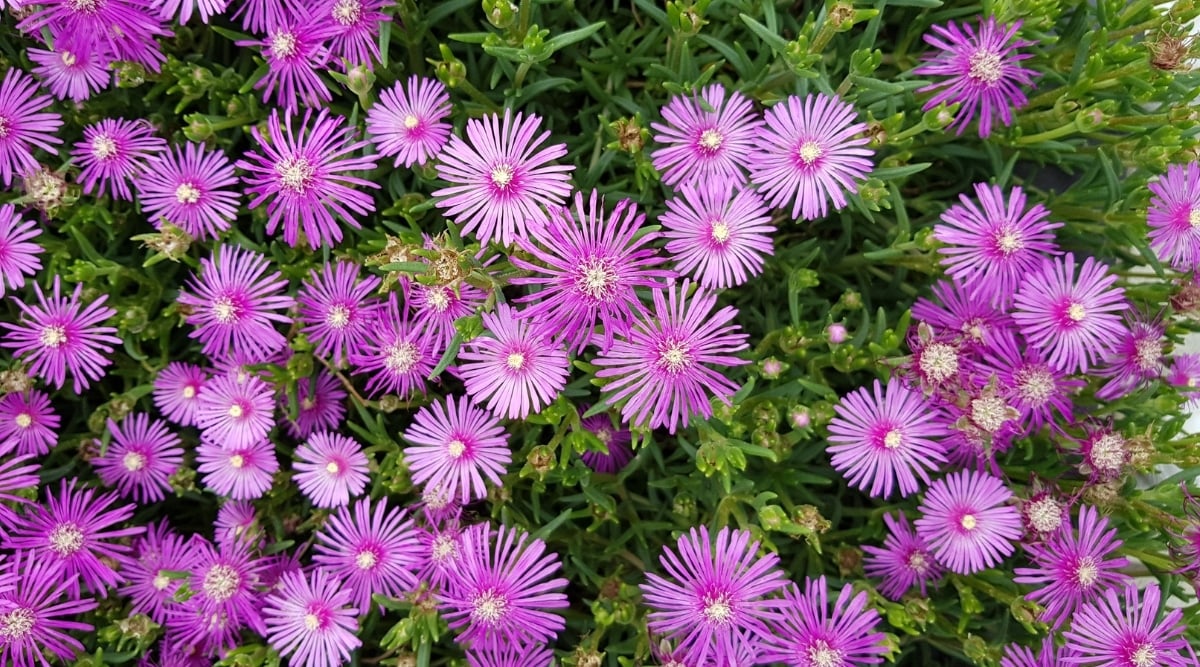
|
|
botanical name Delosperma |
|---|---|
|
|
sun requirements Full Sun |
|
|
height up to 3’ |
|
|
hardiness zones 4-8 |
The ice plant, a cold-tolerant flowering succulent, is mostly perennial and fares well in arid climates but dislikes humidity. It thrives both in the ground and as a container plant, trailing and spilling over the edges beautifully.
Delosperma displays its blooms in spring and summer, with flowers showcasing various colors such as red, white, purple, and yellow.
The ice plant’s nectar-rich flowers attract a variety of pollinators, offering a delightful show and convenient food source for passing insects.
Noteworthy for honey bees, this plant can serve as an essential food source for them, although caution is advised as it may be invasive in certain regions.
Kalanchoe
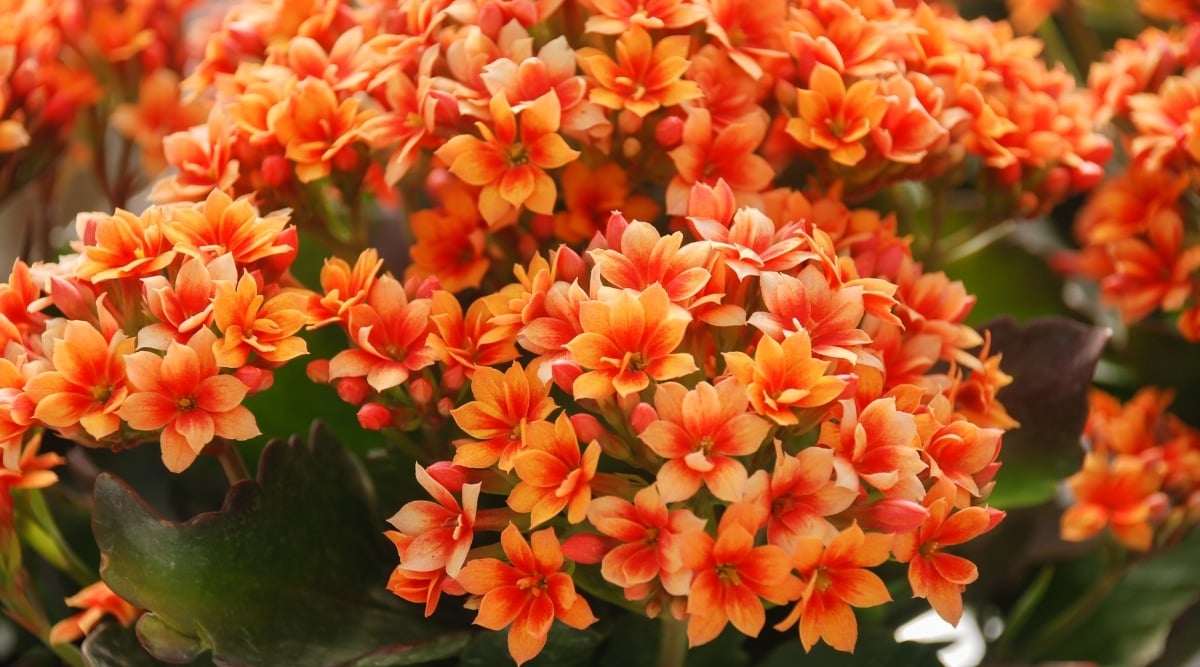
Delight in the captivating beauty of Kalanchoe as it flaunts its stunning clusters of orange flowers. The tightly packed blooms form a dense and intricate floral arrangement, each boasting eight overlapping petals with a delicate, waxy texture that glistens in the light. Truly a sight to behold, K. blossfeldiana is a highly sought-after variety acclaimed for its magnificent winter floral showcase.
|
|
botanical name Kalanchoe |
|---|---|
|
|
sun requirements Bright Indirect Light |
|
|
height 6”-12” |
|
|
hardiness zones 10-12 |
Revel in the charm of Kalanchoe, a delightful genus of flowering succulents that garner popularity during the winter holidays, their prime blooming season. This makes them a favorite among pollinators, as few other plants are in bloom when Kalanchoe’s flowers emerge. Each species displays unique flower formations, with most featuring tall flower spikes adorned with a large cluster of blooms at the apex.
While some flowers sport bell-shaped, drooping petals, others boast upward-facing blooms with single or double-petal arrangements in a plethora of colors and forms, complementing a diverse array of leaf shapes. Among the standout varieties, K. blossfeldiana steals the show with its splendid winter floral spectacle.
Leatherpetal


|
|
botanical name Graptopetalum |
|---|---|
|
|
|
|
Sun Requirements Full Sun to Part Sun |
|---|---|
|
|
Height 1’-2’ |
|
|
Hardiness Zones 9-11 |
The Ghost plant, commonly known as Leatherpetal or Ghost Plant, is part of the Graptopetalum genus. Originating from Central and North America, these plants have varying cold tolerances. While some species can withstand zone 7 winters, others are susceptible to freezing temperatures.
Growing Ghost plants is hassle-free; they grow into beautiful rosette mounds featuring shades of blues and greens, creating an appealing aesthetic.
Various Ghost plant species bloom either during spring or summer, displaying star-shaped flowers in colors spanning from yellow to pink and red. The blooms can range from delicate to stunning, all attracting honey bees seeking their sweet nectar.
Liveforevers


Belonging to the stonecrop family, Dudleyas are native to the North American Southwest and Guadalupe Island. Although there is substantial diversity within the genus, Dudleya species readily crossbreed, showcasing their adaptability.
Unlike some more prevalent succulents, Dudleyas are cherished by collectors for their relative scarcity. Their unique appearance and ease of hybridization add to their appeal among enthusiasts.
These plants present a striking array of flowers, mirroring the diverse leaf patterns they exhibit. For example, the Canyon Dudleya can bloom in vibrant shades of yellow, orange, and red. These blooms attract a plethora of hummingbirds and bees, creating a lively scene when the Dudleyas are in full blossom.
Ox Tongue
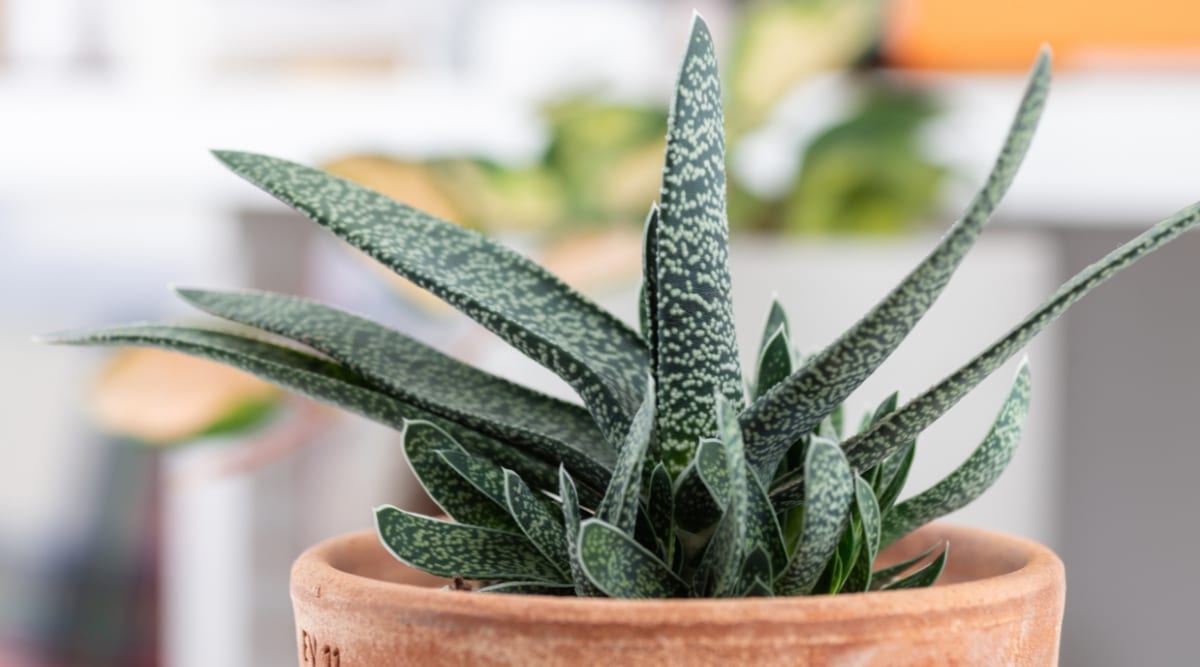
|
|
botanical name Gasteria |
|---|---|
|
|
sun requirements Bright Indirect light |
|
|
height up to 2’ |
|
|
hardiness zones 9-11 |
Gasterias, resembling small aloes or haworthias, are uncommon succulents originating from South Africa. They thrive in lightly shaded environments where they receive indirect or filtered sunlight, making them appealing indoor plants. Though less likely to flower indoors, the mature plants do produce elegant inflorescences during winter and spring, attracting sunbirds and hummingbirds in their natural habitat.
Pigmyweeds
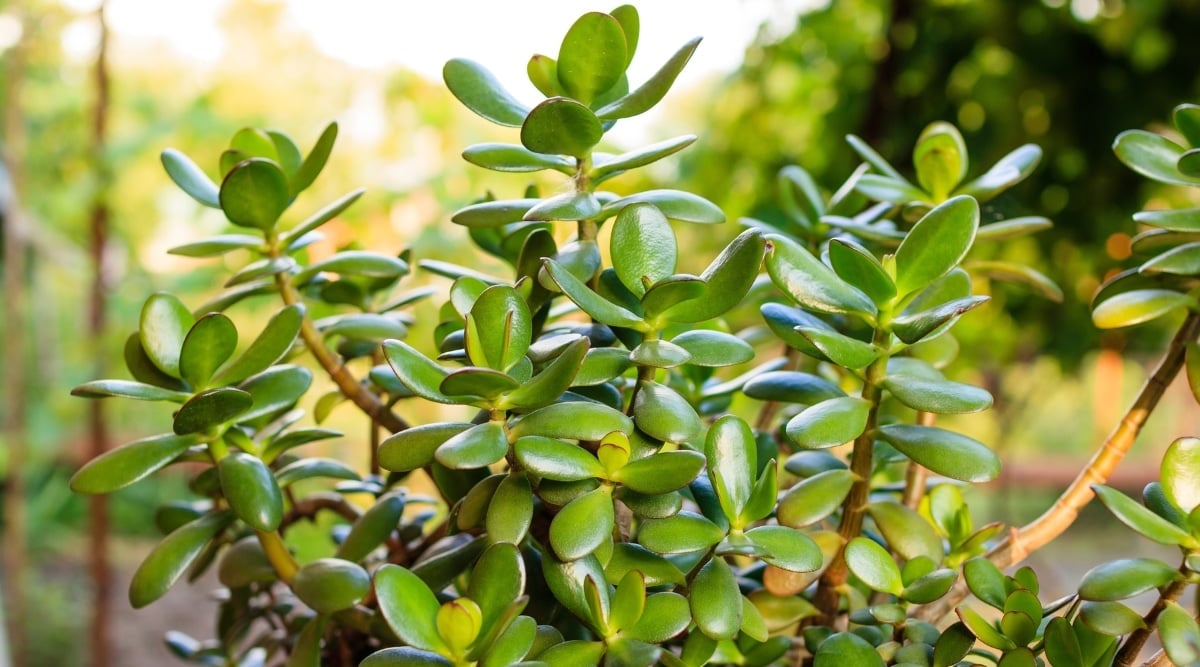
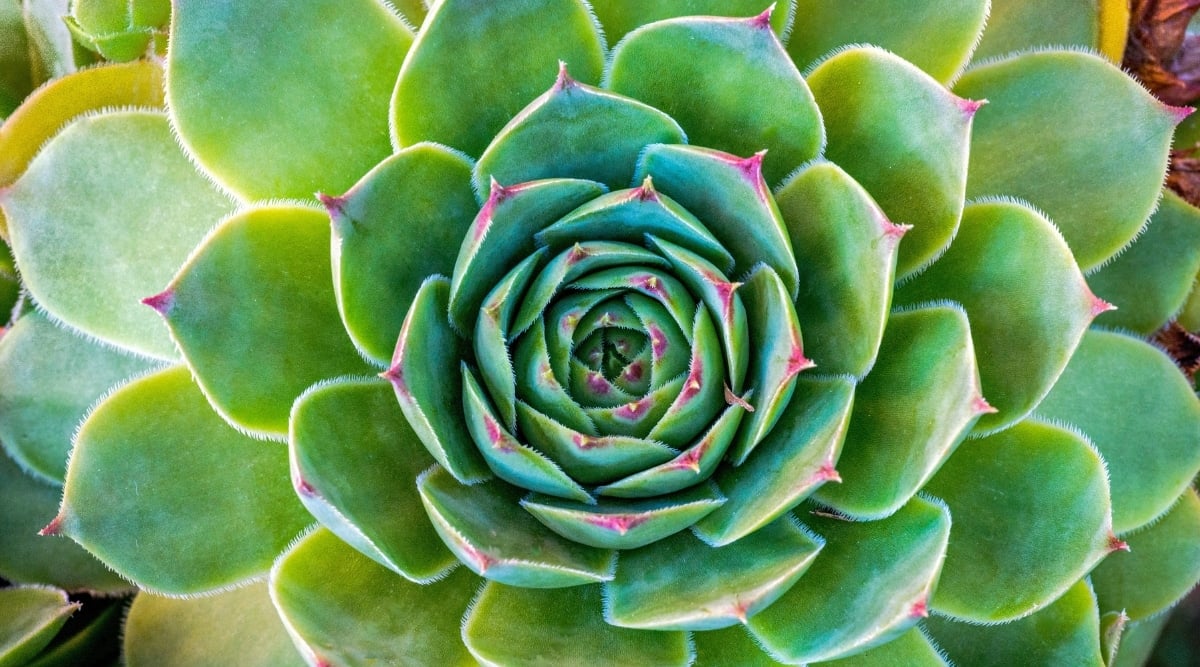

When it comes to houseplants, Crassula is a common choice amongst enthusiasts. This genus boasts around 200 different species, with the Jade Plant standing out as one of the most recognizable.
Thriving in well-draining soil and abundant sunlight, these succulents don’t demand direct sun but prosper in indirect light for the majority of the day.
Given time, these plants can grow quite large but exhibit slow growth. Their delicate white or pink flowers emit a light, sweet fragrance that attracts bees and butterflies. Caution is advised for pet owners, as Crassula plants can be harmful to animals.
Houseleek
Sempervivum, known as Houseleek, is another excellent choice for those living in colder climates, thanks to its remarkable cold resistance.
4”-6”
4-8
Houseleeks, commonly known as Hens and Chicks, thrive in cooler climates due to their exceptional cold tolerance, making them a popular choice for gardeners. These plants are monocarpic, with each rosette dying after blooming but reproducing easily.
Featuring flowers in shades of yellow, green, purple, or pink, Houseleeks bloom when specific parts of the plant mature. Bees and hummingbirds are attracted to these flowers, contributing to their pollination and adding visual appeal to your garden.
Spurges


Euphorbia
Full Sun to Part Sun
18”
4-8
Euphorbias, such as the African milk tree and Crown-of-thorns, belong to an interesting genus with diverse species. While they may be challenging to categorize due to their variations, they are easy to grow and maintain, making them a sought-after houseplant.
With many varieties boasting yellow flowers that attract bees and the Crown-of-thorns featuring red blooms favored by hummingbirds, these plants bloom in summer and go dormant in winter, showcasing their cold hardiness, thriving all the way to zone 4.
Discover Stonecrop
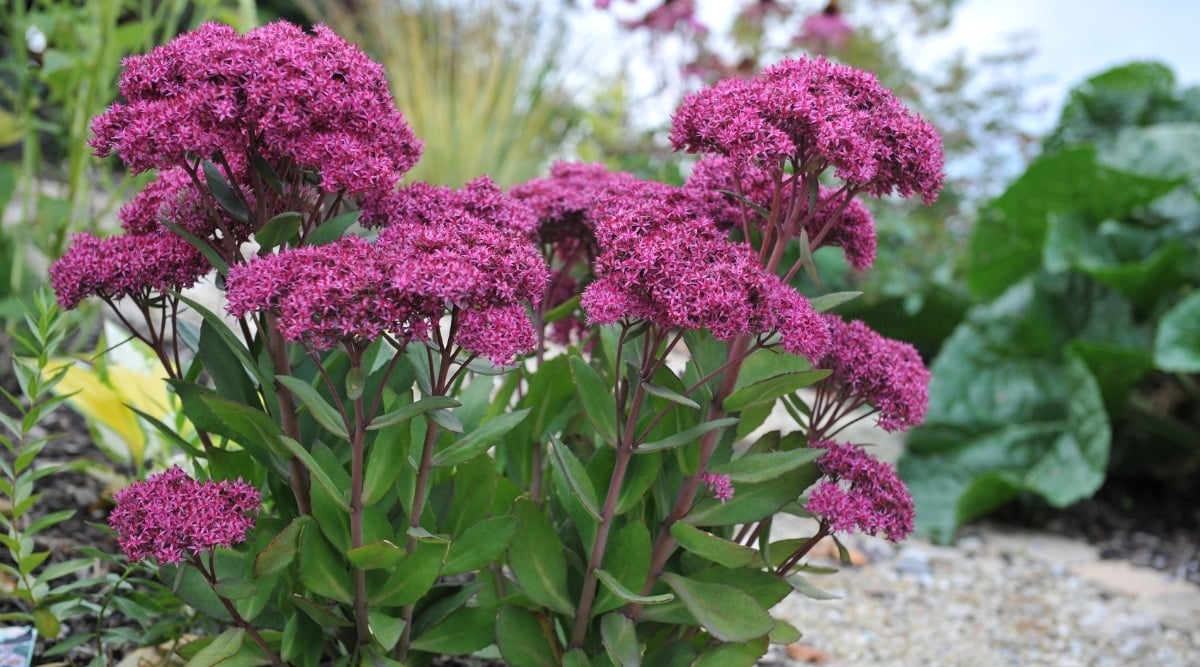

|
|
Botanical Name Sedum |
|---|---|
|
|
Sun Requirements Full Sun |
|
|
Height 1’-3’ |
|
|
Hardiness Zones 3-11 |
If you’re looking for a plant that is both beautiful and easy to care for, Stonecrop, also known as Sedum, is an excellent choice. It is known for its resilience to cold temperatures.
Sedum comes in low-growing and upright varieties. The low-growing types are perfect as ground cover, while the upright species bloom elegantly from summer to fall.
These fall-blooming sedums play a vital role in attracting pollinators when other plants are not in bloom. Their flowers are a magnet for bees and butterflies, and they can also help reduce aphids in your garden by attracting hoverflies that prey on aphids.
Explore Tree Houseleek


|
|
Sun Requirements Full Sun to Part Sun |
|---|---|
|
|
Height Up to 5’ |
|
|
Hardiness Zones 9-11 |
Aeonium, a fascinating succulent genus with approximately 35 species of monocarpic flowering plants, has the unique characteristic of perishing after blooming.
Despite their monocarpic nature, tree houseleeks, like most monocarpic plants, are prolific reproducers and always have young plants ready to take over once the parent plant dies.
Aeonium is distinguished by its exceptionally shiny leaves that form tightly packed rosettes. Given adequate space, they can grow quite large. During summer, these rosettes produce large cone-shaped flower clusters with small, yellow, star-shaped flowers that attract pollinators, especially hummingbirds.
Zebra Cactus

|
|
Botanical Name Haworthia |
|---|---|
|
|
Sun Requirements Full Sun to Part Sun |
|
|
Height 5” |
|
|
Hardiness Zones 9-11 |
Zebra Cactus, not an actual cactus but a genus of small succulent plants akin to aloe, earns its name from its long, pointed leaves adorned with white textured bands or spots.
Thriving in bright light but shying away from full sun, Zebra Cactus is partial to hot weather and sandy soil.
Haworthia plants take around two years to mature before blooming, typically during summer or fall and particularly on the longest days of summer. They boast a tall spike with small white blooms at the top.
Blooming indicates the plant’s contentment and forthcoming reproduction. In their natural habitat, sunbirds pollinate them, but they also attract local pollinators.
Final Thoughts
Consider integrating succulent plants like these into your pollinator garden, especially if you reside in drought-prone regions. Featuring flowering succulents in your garden is an excellent method to entice bees, butterflies, and hummingbirds back for frequent visits.

